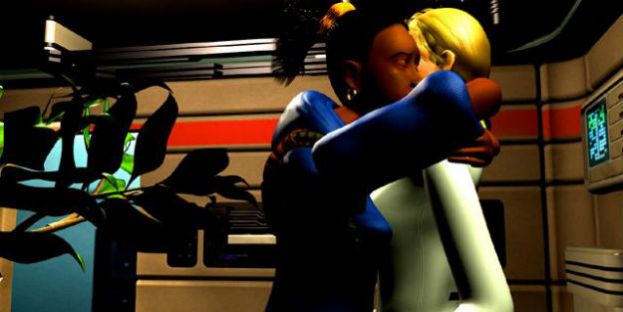
Kenji Eno, one of video games’ most unusual creators, died of heart failure on Wednesday at the age of 42. According to a report in The Asahi Shimbun newspaper (via Kotaku), the heart attack was brought on by high blood pressure.
Eno was never the most prominent of Japan’s unusual game makers during the height of his output in the 1990s, but his games were every bit as forward thinking and creative as his contemporaries like Hideo Kojima (Metal Gear Solid), Hironobu Sakaguchi (Final Fantasy), and Yu Suzuki (Virtua Fighter, Shenmue.) His career began working with developer EIM on the Nintendo Entertainment System near the end of its lifespan, designing rarities like Panic Restaurant and unreleased Sunsoft titles like Sunman.
It wasn’t until Eno founded the studio WARP that he began to make his most important games. Starting with 1995’s horror adventure D for the 3DO and Sega Saturn, Eno created a string of challenging and experimental games. Amongst Eno’s more unusual ideas was the idea of digital actors, characters who could appear in multiple roles across games like real actors in films. Laura Harris, the main character in D, appeared next in Eno’s science fiction thriller for Sega Saturn, Enemy Zero (pictured above).
Enemy Zero in particular embodies Eno’s strange design philosophy. The game borrowed a number of elements popular from the era, including CG-animated cutscenes and exploration on pre-rendered backgrounds a la Myst, but the game also had you exploring dark hallways in first person, fighting aliens that were completely invisible and could only be identified via sound. One of the designers that worked on Enemy Zero alongside Eno was the young Fumito Ueda, who went on to Sony after that to create Ico.
During this period, Eno continued to experiment with using sound as a primary input in video games rather than graphics. His next game, Real Sound: Winds of Regret for Sega Saturn and Dreamcast, has no graphics whatsoever. The game is played entirely by listening to dialogue and sound effects. The idea was to make a game for blind players.
In the past decade, Eno’s work in the game industry slowed to a trickle. After founding the new studio From Yellow to Orange in 2006 he produced just one last console game, the WiiWare title You, Me, and The Cubes.
Prolific or not, Eno was a powerful and distinct voice in video games. He will be missed.


